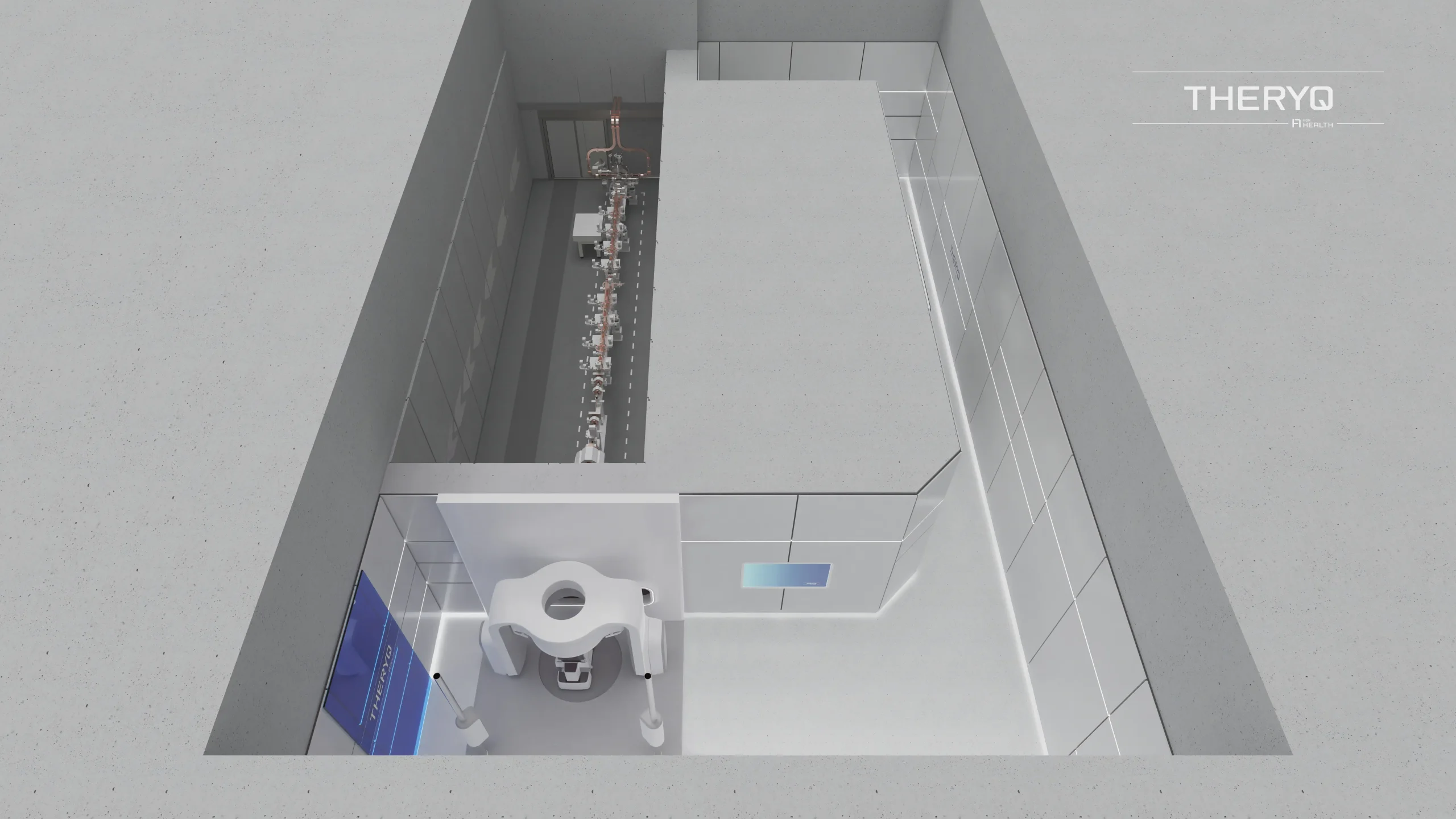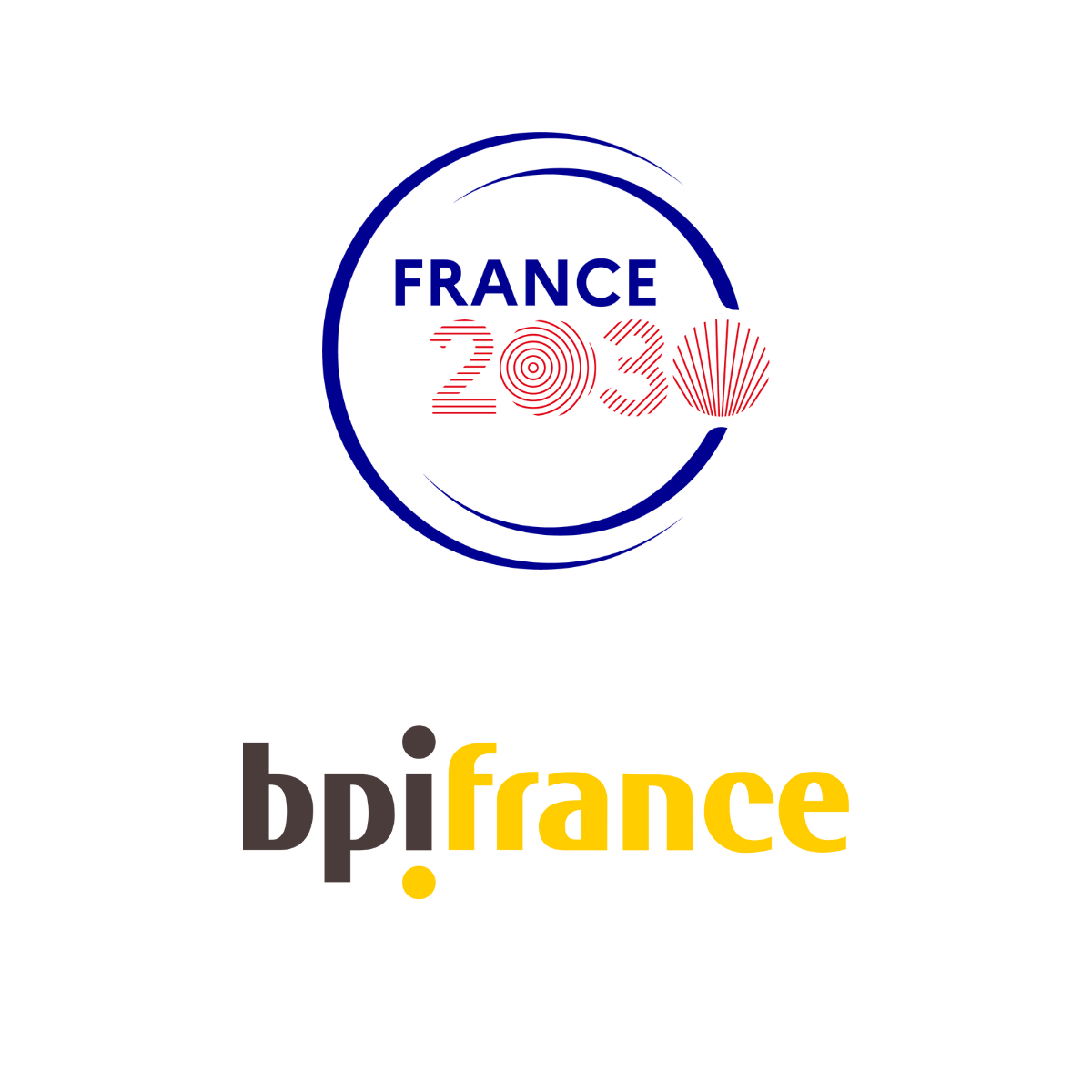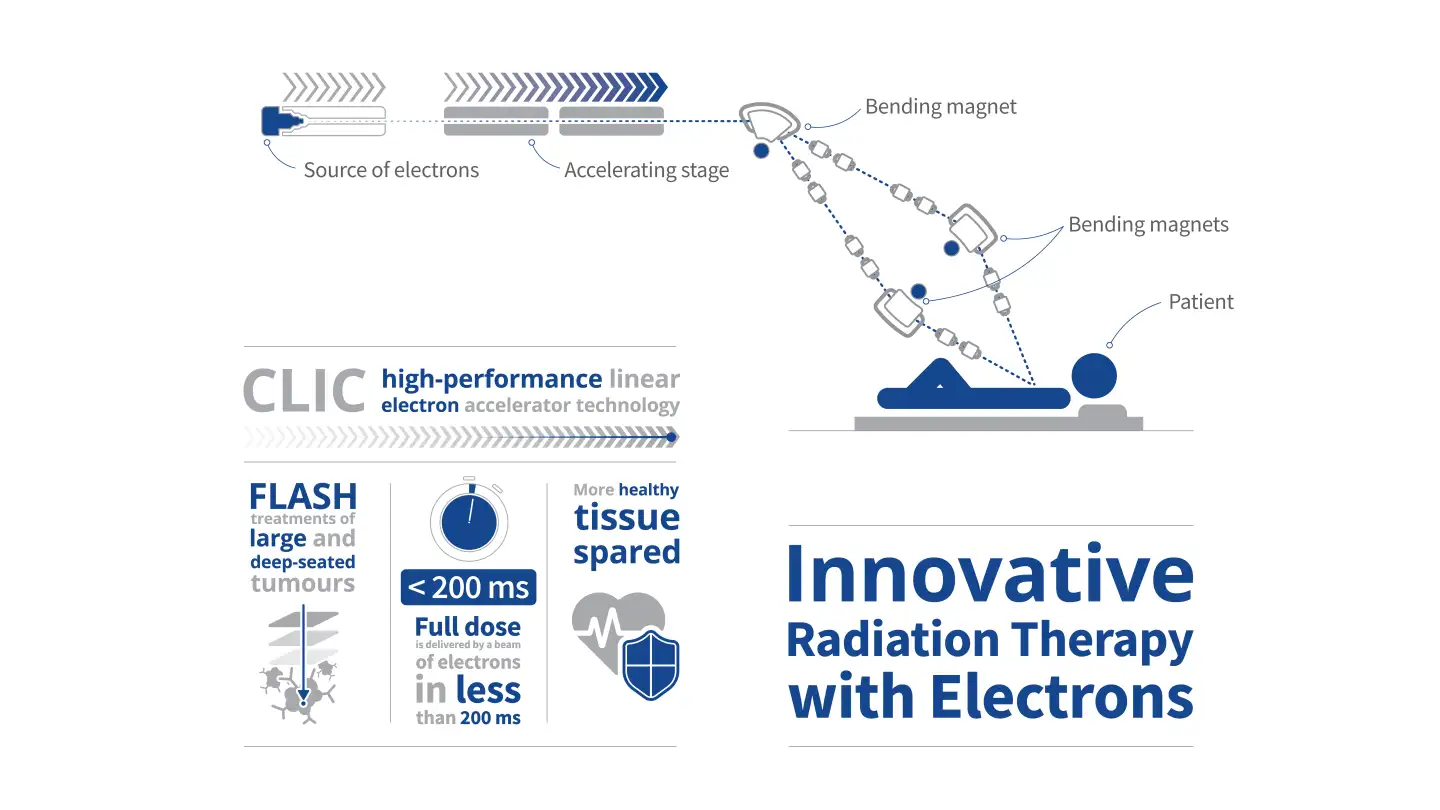FLASHDEEP
Shifting the paradigm of radiotherapy
THERYQ has signed an agreement with The Centre Hospitalier Universitaire Vaudois (CHUV) in Lausanne, Switzerland and the European Organization for Nuclear Research (CERN) to develop FLASHDEEP, a revolutionary FLASH radiotherapy device that will use Very High-Energy Electron (VHEE) radiation to treat cancers resistant to conventional treatments. The first device, based on CERN technology, will be installed at CHUV.
This development shows significant potential in the advancement of the effectiveness of radiotherapy, offering hope for improved patient outcomes in the future. Preliminary findings have shown that by reducing irradiation to a few milliseconds, FLASH radiotherapy could reduce side effects while maintaining the same level of tumor targeting as conventional radiotherapy treatments.123
The tripartite agreement covers collaboration on the development, planning, regulatory compliance and construction of the world’s first radiotherapy device using the FLASH technique with very high energy electrons. THERYQ will produce this unique device that uses a compact linear accelerator based on CERN technology.
A device not limited by the depth of penetration of low energy electrons…
By integrating the innovative compact linear accelerator technology developed by CERN, FLASHDEEP will use very high energy electron beams (VHEE) of 100 to 200 MeV, 10 to 20 times more powerful than those of FLASHKNiFE. This increased power enables treatment approaches targeting deeper tissues, potentially addressing a wider range of cancer types up to a depth of around 20 cm456.
CERN has responded to the challenge of producing a high dose of very high energy electrons in less than 100 milliseconds, required for FLASH radiotherapy, by designing a unique accelerator based on CLIC (Compact Linear Collider) technology. It will be able to accelerate electrons to reach tumors up to around 20 cm deep and will be compact enough to fit in typical hospital campus infrastructure456. THERYQ has secured an exclusivity with CERN to use the CLIC technology in FLASHDEEP.
VHEE FLASH technology has several advantages. Very High-Energy Electron beams can be shaped and transported in a way that is not possible with X-rays, and radiotherapy devices based on CERN’s electron accelerator technology will be significantly more compact and less expensive than current proton-based therapy facilities.45

FLASHDEEP Clinical Applications
From the first studies in 2013 on the FLASH effect to the first patient with skin cancer successfully treated in 20193, THERYQ has supported the development of FLASH therapy, particularly through a long-standing partnership with CHUV. The company has developed FLASHKNiFE, for external or intraoperative FLASH radiotherapy (6 or 9 MeV) of superficial or shallow tumors (up to around 27 mm in depth).
Using VHEE, FLASHDEEP is being developed to explore treatment approaches for deep-seated solid tumors, with a penetration depth of up to around 20 cm. This device has the potential to expand the use of radiotherapy in oncology and unlock new treatments for patients with cancer, as well as decrease treatment cost.45
Due to its high-energy beam, FLASHDEEP aims to expand the potential applications of external beam radiotherapy, including palliative, curative, or adjuvant treatment in combination with chemotherapy, depending on the characteristics and physical state of the cancerous tumor567. The initial indications suggest this technology could potentially be used for prostate cancer, head and neck cancer, pancreatic cancer, and glioblastoma.
Gustave Roussy & THERYQ Selected as Part of the “i-Démo” France 2030 Call For Projects
THERYQ, a French company specializing in the development of FLASH radiotherapy systems, and Gustave Roussy, the leading French and European center for cancer research, ranked 4th worldwide, have been selected as part of the “i-Démo” / France 2030 call for projects for the “FLASHDEEP” project, with a budget of 38 million euros.
Thanks to the funding provided by Bpifrance as part of France 2030, THERYQ and Gustave Roussy will bring together biologists, physicists, and physicians to conduct the necessary preclinical and clinical studies to demonstrate the improved tolerance and efficacy of FLASHDEEP compared to conventional radiotherapy. They will also submit the CE marking application so that French and European patients in need can benefit from this new therapeutic option as quickly as possible.
In parallel, THERYQ plans to build and equip its industrial platform to enable the launch of the first machines, followed by mass production of FLASHDEEP devices and the start of their commercialization in Europe. This industrial deployment project also represents a great economic opportunity for France, with the creation of more than 600 direct and indirect jobs in the country. Ultimately, it will lead to the revival of a French radiotherapy industrial sector, a field that has been neglected since the late 1980s.
FLASHDEEP is not commercially available and has not been cleared for sale. This device is intended exclusively for display or demonstration purposes and may not be made available as a medical device until it has been brought into conformity with the relevant regulations.

References
1. Favaudon, V., Caplier, L., Monceau, V., Pouzoulet, F., Sayarath, M., Fouillade, C., Poupon, M., Brito, I., Hupé, P., Bourhis, J., Hall, J., Fontaine, J., & Vozenin, M. Ultrahigh dose-rate FLASH irradiation increases the differential response between normal and tumor tissue in mice. Science Translational Medicine, 6(245) (2014). https://doi.org/10.1126/scitranslmed.3008973
2. Vozenin, M., Hendry, J., & Limoli, C. Biological benefits of ultra-high dose rate FLASH radiotherapy: Sleeping Beauty awoken. Clinical Oncology, 31(7), 407–415 (2019). https://doi.org/10.1016/j.clon.2019.04.001
3. Bourhis, J., Sozzi, W. J., Jorge, P. G., Gaide, O., Bailat, C., Duclos, F., Patin, D., Ozsahin, M., Bochud, F., Germond, J., Moeckli, R., & Vozenin, M. Treatment of a first patient with FLASH-radiotherapy. Radiotherapy and Oncology, 139, 18–22 (2019). https://doi.org/10.1016/j.radonc.2019.06.019
4. Schüler, E., Acharya, M., Montay‐Gruel, P., Loo, B. W., Vozenin, M., & Maxim, P. G. Ultra‐high dose rate electron beams and the FLASH effect: From preclinical evidence to a new radiotherapy paradigm. Medical Physics, 49(3), 2082–2095 (2022). https://doi.org/10.1002/mp.15442
5. Böhlen, T.T.; Germond, J.-F.; Traneus, E.; Bourhis, J.; Vozenin, M.-C.; Bailat, C.; Bochud, F. & Moeckli, R., Characteristics of very high-energy electron beams for the irradiation of deep-seated targets. Med. Phys., 48: 3958-3967 (2021). https://doi.org/10.1002/mp.14891
6. Fischer, J., Whitmore, L., Desrosiers, C. et al. Very high-energy electrons as radiotherapy opportunity. Eur. Phys. J. Plus 139, 728 (2024). https://doi.org/10.1140/epjp/s13360-024-05455-x
7. Panaino, C. M. V., Piccinini, S., Andreassi, M. G., Bandini, G., Borghini, A., Borgia, M., Di Naro, A., Labate, L. U., Maggiulli, E., Portaluri, M. G. A., & Gizzi, L. A. (2025). Very High-Energy Electron Therapy Toward Clinical Implementation. Cancers, 17(2), 181. https://doi.org/10.3390/cancers17020181
